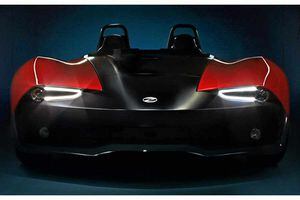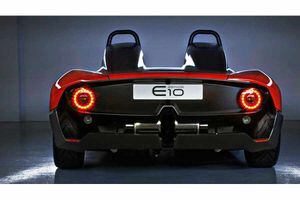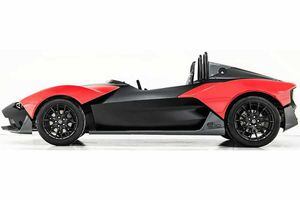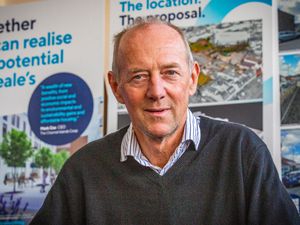The machine of a dream

PRAISE for the newly launched Zenos E10, which debuted in January, has come in bucketfuls.
One accolade published on Twitter reads: 'Something about this car/team stinks of success'.
It's hardly surprising given the E10's pedigree.
Its architect is local designer Simon Keys of First Principle Design and the team which created it comprises members who formerly worked with Lotus and Caterham.
The Zenos E10, went from idea to drawing board to physical creation in just 18 months, a staggering feat when one considers the number of elements that go into designing and building something as complex as a car.
And the E10 was extremely well received when it was launched in January at the Autosport International Show.
'It was hailed by the media as the "star of the show". We were very, very pleased as a team,' said Simon.
'We were walking around the same show a year earlier with an idea. I had done some initial concept work. We were at the show saying "we want to be here next year"'.
The task now is now to ready E10 for production. Once production is fully up and running Zenos hopes to build 400 models a year at peak production.
'We didn't go the show expecting to take orders, we just wanted to generate some interest, but we took 25 orders. To take deposits was unexpected but very exciting.'
Simon likens car design to cooking, though he admits it is a strange analogy.
'You take the ingredients and put them together and create something very different depending on how you put them together. The end result is quite unique.'

And the E10 is certainly unique.
It weighs just 650kg and has a 2-litre Ford engine, delivering 200bhp.
It has an aluminium backbone running down the length of the car, and a carbon fibre tub bolted to it to form the shell.
The carbon fibre is made from off-cuts sourced from a company in Germany.
'Other manufacturers discard them. It doesn't give the ultimate performance of raw carbon fibre, it's about 75%, but it delivers all the benefits.
One real benefit of building the E10 this way is the price. At a shade under £25,000 it fits perfectly into the market for which it was designed, the low volume sports car market.
'I think it is an amazing product and the reason why we took 25 orders straight away is because this was always about the opportunity spotted in the market, not just the dream of an individual who wanted to design a dream car.

Compared with cars like Ariel, Caterham and Lotus, the E10 is within reach of car enthusiasts who want a fast, fun car to take on a track day.
'If we can design down to the price with the right look, performance and experience we are onto a winner and that has been the driver throughout this process.'

IT TAKES a certain type of person who knows what they want to do from an early age. Simon Keys is one of those people. As a teenager he decided that he wanted to be a car designer. It may be an implausible dream for some, but Simon was determined.
'I was one of those lucky kids who knew what I wanted to do when I was about 14 or 15. I decided I was going to design cars for a living.'
After studying in the heart of the British motor industry in Coventry, Simon worked for MIRA, the Motor Industry Research Association for nine years. He worked on vehicle crash testing, safety engineering development, component and system design and electric vehicles. He worked with companies like MG Rover and Bentley and the McLaren Formula 1 team.
'It was fascinating, a real education. Running projects straight out of university for those companies was very exciting.'
Safety legislation was at a pivotal point in the history of car manufacturing at that time.
'Around the period that I was involved was the start of the NCAP programme,pushing safety standards beyond the legislative requirements. We took on projects for companies, taking existing cars and bringing them up to the top NCAP rating.'
After a decade of living in the UK, Simon made a lifestyle decision to return home to Guernsey and start his own company First Principle Design.
A tough gig, but that determination came in and 10 years later Simon is busier than ever.
'It was something I had wanted to do for some time, to step out of my comfort zone. It was challenging initially.'
The first car he designed was for SDR Sportscars, the V-Storm, a three-seater with an exo-skeleton chassis running on a Subaru-turbocharged engine. This car was awarded Kit Car of the Year in 2010, beating some tough established competition, not bad for a first effort.
He has since worked with private individuals, Caterham Cars, Tiger Sports Cars, Atlantis Marine and Levaton Platforms on a variety of projects in the automotive, marine and product design sectors.





